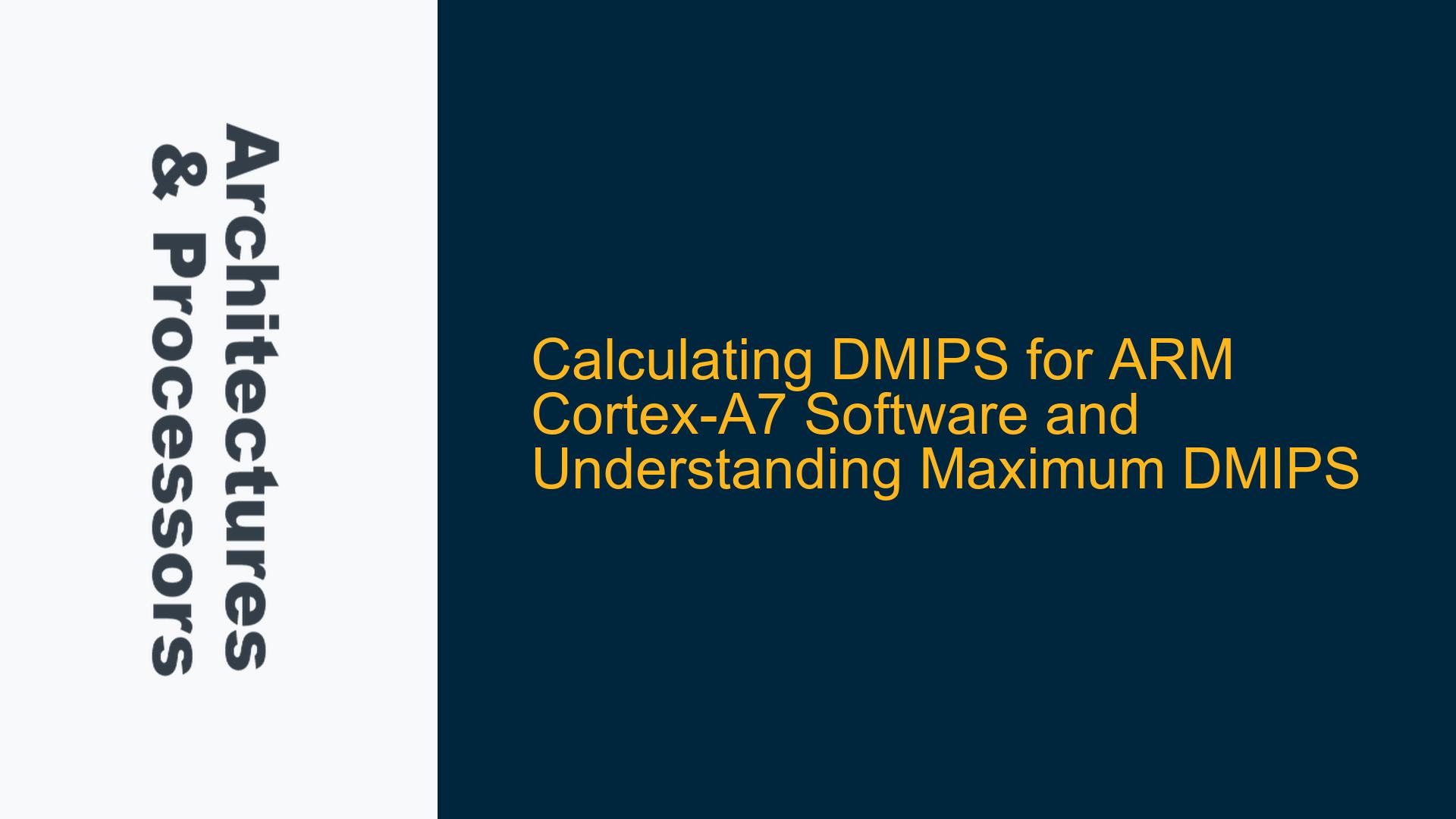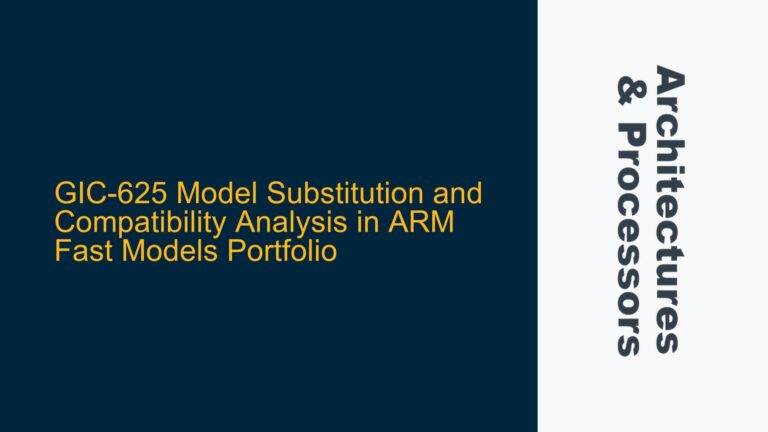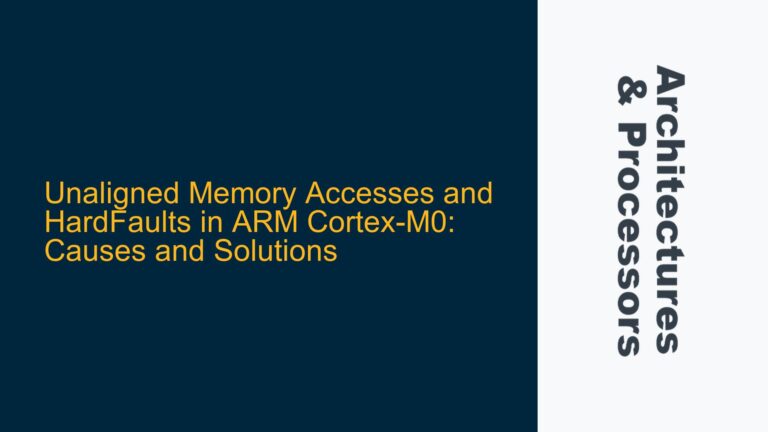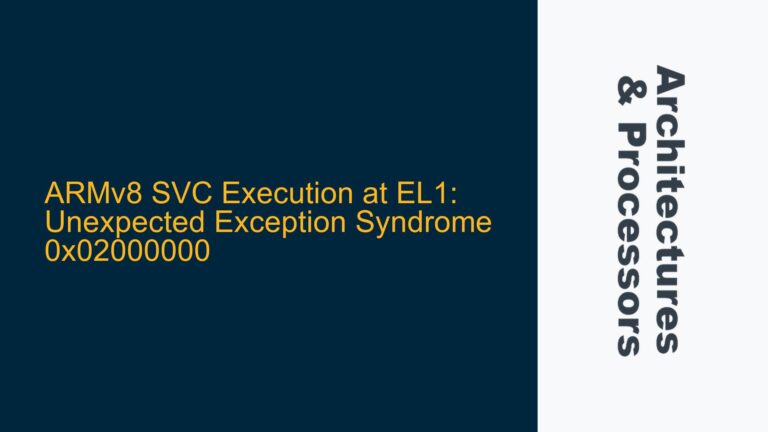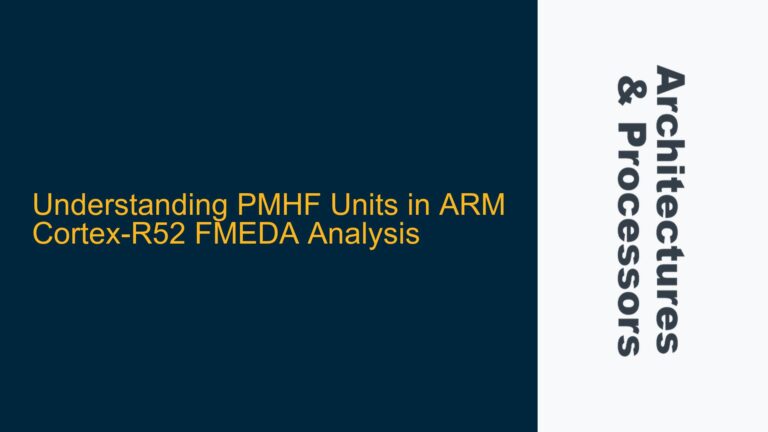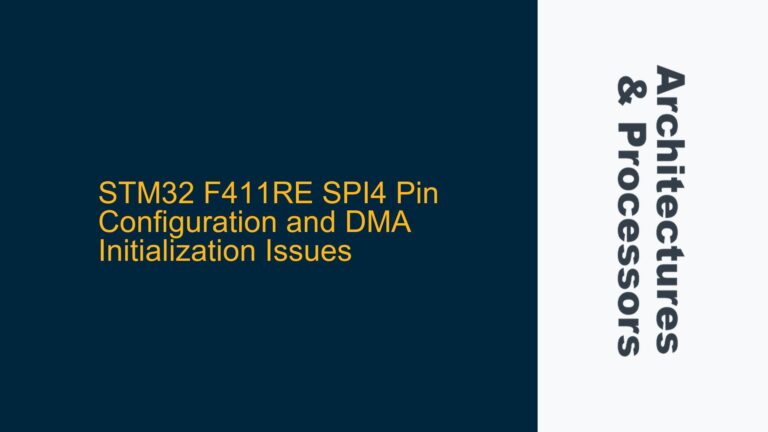Understanding DMIPS Calculation for ARM Cortex-A7 Software
The ARM Cortex-A7 is a highly efficient processor designed for low-power applications, often used in embedded systems and mobile devices. When developing software for the Cortex-A7, understanding its performance metrics, particularly Dhrystone MIPS (DMIPS), is crucial for optimizing and benchmarking applications. DMIPS is a standardized metric derived from the Dhrystone benchmark, which measures the number of million instructions per second (MIPS) a processor can execute when running the Dhrystone code. Calculating DMIPS for a specific software application on the Cortex-A7 involves understanding both the processor’s capabilities and the software’s execution characteristics.
The Cortex-A7 is a 32-bit RISC processor that supports the ARMv7-A architecture. It features an in-order, dual-issue pipeline, which allows it to execute up to two instructions per clock cycle under optimal conditions. The processor also includes features such as branch prediction, a memory management unit (MMU), and optional NEON SIMD (Single Instruction, Multiple Data) support, which can significantly impact performance. To calculate DMIPS for a specific software application, it is essential to consider the processor’s clock speed, the efficiency of the software’s instruction mix, and any potential bottlenecks in the system.
The Dhrystone benchmark is a synthetic benchmark that focuses on integer operations, string manipulation, and control flow. It is designed to be representative of general-purpose computing workloads. The DMIPS score is calculated by dividing the Dhrystone score (in Dhrystones per second) by 1,757, which is the Dhrystone score of a VAX 11/780, a historical reference machine. For the Cortex-A7, the DMIPS score is often provided by ARM as a theoretical maximum based on the processor’s architecture and clock speed. However, the actual DMIPS achieved by a specific software application may vary depending on factors such as compiler optimizations, memory access patterns, and the presence of hardware accelerators.
To calculate the DMIPS for a specific software application on the Cortex-A7, the following steps are typically followed: First, the software is compiled with the appropriate compiler flags to optimize for the Cortex-A7 architecture. Next, the software is run on the target hardware, and the execution time for the Dhrystone benchmark is measured. The Dhrystone score is then calculated by dividing the number of Dhrystone iterations by the execution time. Finally, the DMIPS score is obtained by dividing the Dhrystone score by 1,757. This process provides a quantitative measure of the software’s performance on the Cortex-A7, which can be used for comparison and optimization purposes.
Factors Influencing Maximum DMIPS on ARM Cortex-A7
The maximum DMIPS achievable on the ARM Cortex-A7 is influenced by several factors, including the processor’s clock speed, pipeline efficiency, and the presence of hardware accelerators. The Cortex-A7 is designed to deliver high performance per watt, making it suitable for power-constrained applications. However, achieving the maximum DMIPS requires careful consideration of both hardware and software factors.
The clock speed of the Cortex-A7 is a primary determinant of its maximum DMIPS. The processor’s DMIPS per MHz rating is typically provided by ARM and is based on the architecture’s ability to execute instructions efficiently. For the Cortex-A7, this rating is approximately 1.9 DMIPS per MHz. This means that a Cortex-A7 running at 1 GHz can theoretically achieve up to 1,900 DMIPS. However, the actual DMIPS achieved in practice may be lower due to factors such as pipeline stalls, cache misses, and memory bandwidth limitations.
The Cortex-A7’s in-order, dual-issue pipeline is designed to maximize instruction throughput while minimizing power consumption. However, the efficiency of the pipeline can be affected by the instruction mix of the software being executed. For example, software with a high proportion of branch instructions or memory access operations may experience pipeline stalls, reducing the overall DMIPS. Additionally, the presence of hardware accelerators, such as the NEON SIMD unit, can significantly impact performance. The NEON unit can accelerate certain types of computations, such as vector operations, but its effectiveness depends on the software’s ability to utilize these accelerators effectively.
Memory subsystem performance is another critical factor influencing the maximum DMIPS on the Cortex-A7. The processor includes a hierarchical memory system with L1 and L2 caches, which are designed to reduce memory access latency. However, cache misses can significantly impact performance, particularly in applications with large working sets or irregular memory access patterns. The Cortex-A7 also includes a memory management unit (MMU), which supports virtual memory and can improve memory access efficiency. However, the MMU’s effectiveness depends on the software’s memory management strategy and the operating system’s ability to manage page tables efficiently.
Compiler optimizations play a crucial role in achieving the maximum DMIPS on the Cortex-A7. Modern compilers, such as GCC and LLVM, include a range of optimization flags that can significantly improve performance. These optimizations include instruction scheduling, loop unrolling, and vectorization, which can increase the efficiency of the instruction mix and reduce pipeline stalls. However, the effectiveness of these optimizations depends on the software’s structure and the compiler’s ability to analyze and optimize the code. In some cases, manual optimization may be required to achieve the best possible performance.
Practical Steps for Calculating and Optimizing DMIPS on ARM Cortex-A7
Calculating and optimizing DMIPS for a specific software application on the ARM Cortex-A7 involves a combination of benchmarking, profiling, and optimization techniques. The goal is to measure the software’s performance accurately and identify any bottlenecks that may be limiting the DMIPS. The following steps provide a practical guide for this process.
The first step is to compile the software with the appropriate compiler flags to optimize for the Cortex-A7 architecture. This typically involves enabling architecture-specific optimizations, such as ARMv7-A instruction set support, and enabling features such as NEON SIMD if applicable. The compiler should also be configured to generate position-independent code (PIC) if the software will be run in a shared library or dynamically linked environment. Additionally, the compiler should be configured to generate debug symbols, which will be useful for profiling and optimization.
Once the software is compiled, the next step is to run the Dhrystone benchmark on the target hardware. The Dhrystone benchmark should be configured to run a sufficient number of iterations to ensure accurate timing measurements. The execution time for the benchmark should be measured using a high-resolution timer, such as the ARM Performance Monitoring Unit (PMU), if available. The Dhrystone score is then calculated by dividing the number of iterations by the execution time. This score is then divided by 1,757 to obtain the DMIPS score.
Profiling the software is an essential step in identifying performance bottlenecks. Profiling tools, such as ARM’s Streamline Performance Analyzer or Linux perf, can be used to collect detailed performance data, including instruction counts, cache misses, and pipeline stalls. This data can be used to identify specific areas of the software that are limiting performance. For example, if the profiling data shows a high number of cache misses, the software’s memory access patterns may need to be optimized. Similarly, if the data shows a high number of branch mispredictions, the software’s control flow may need to be restructured.
Optimizing the software based on the profiling data involves a combination of code restructuring, algorithm optimization, and compiler tuning. For example, if the profiling data shows that a particular function is responsible for a significant portion of the execution time, that function may need to be optimized. This could involve rewriting the function to reduce the number of memory accesses, restructuring loops to improve cache locality, or using NEON SIMD instructions to accelerate computations. Additionally, the compiler’s optimization flags may need to be adjusted to enable more aggressive optimizations, such as loop unrolling or vectorization.
Finally, it is essential to validate the optimizations by re-running the Dhrystone benchmark and profiling the software again. This iterative process ensures that the optimizations have the desired effect and do not introduce new bottlenecks. Once the software’s performance has been optimized, the final DMIPS score can be calculated and used as a benchmark for future development and optimization efforts.
In conclusion, calculating and optimizing DMIPS for software running on the ARM Cortex-A7 involves a detailed understanding of the processor’s architecture, careful benchmarking and profiling, and iterative optimization. By following the steps outlined above, developers can achieve the best possible performance for their applications on the Cortex-A7, ensuring that they meet the performance requirements of their target applications.
